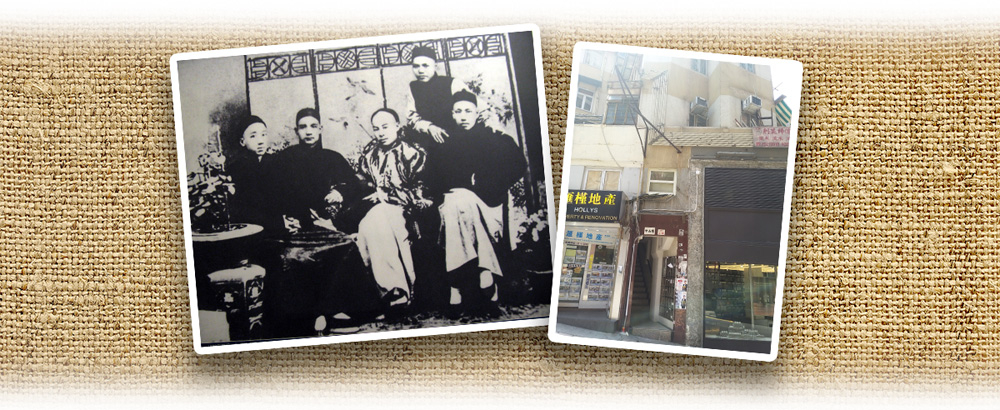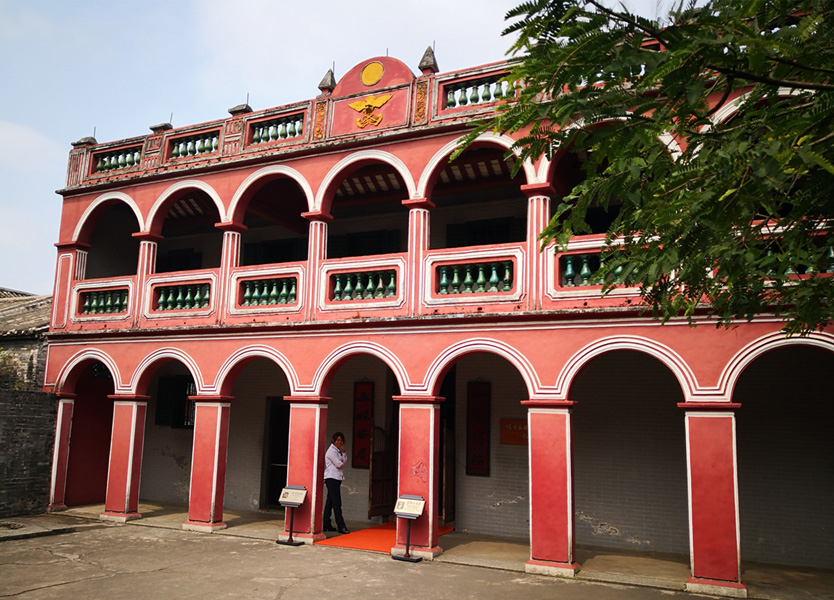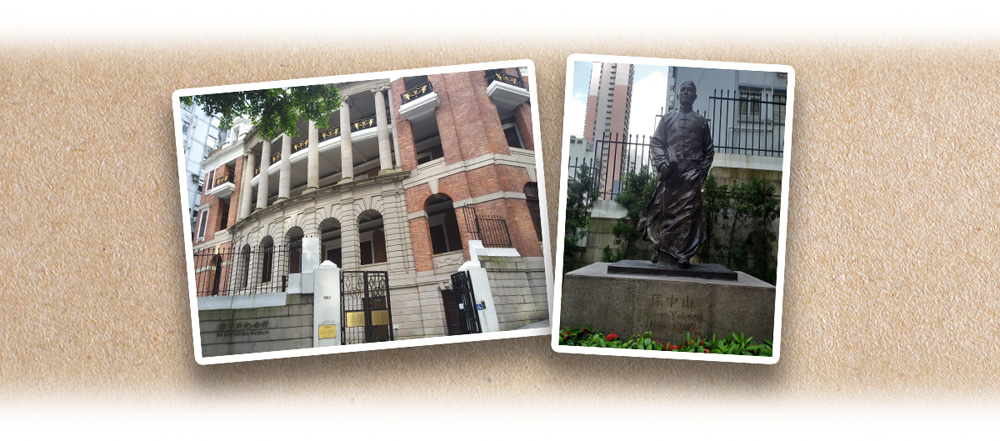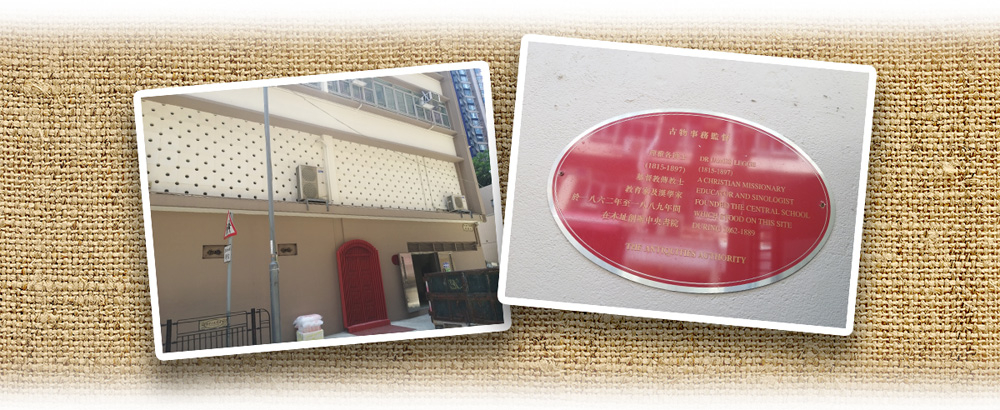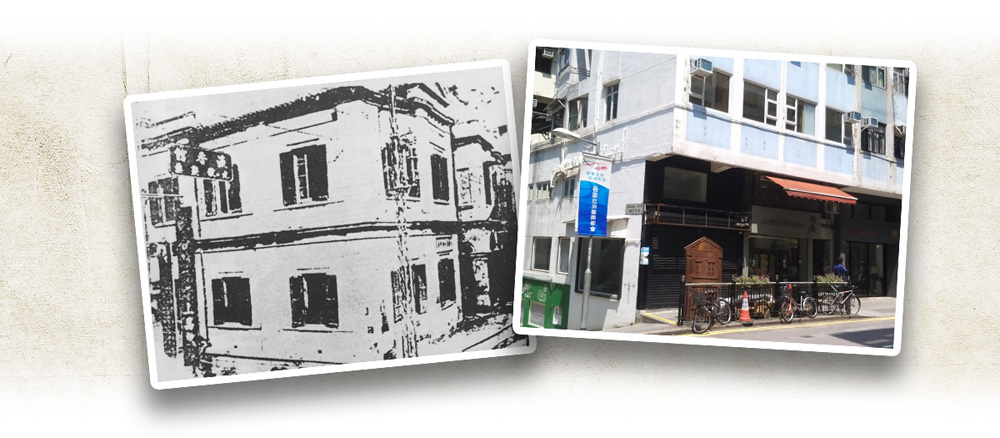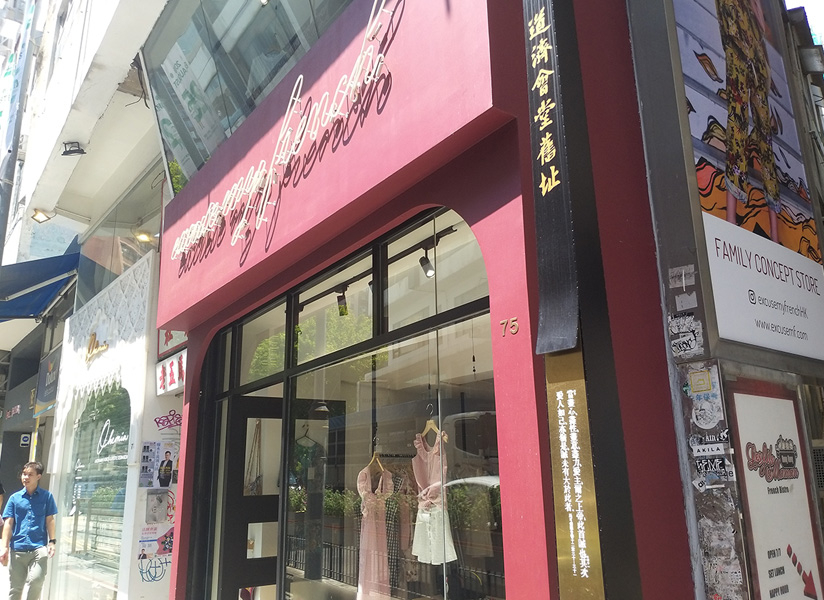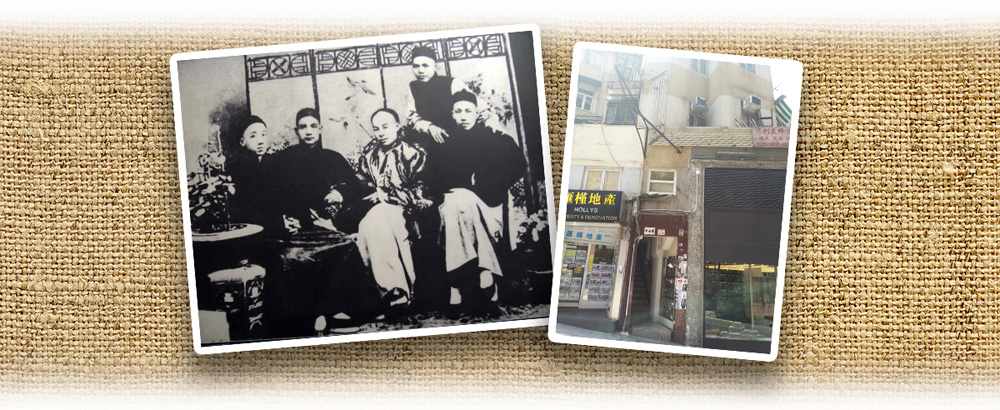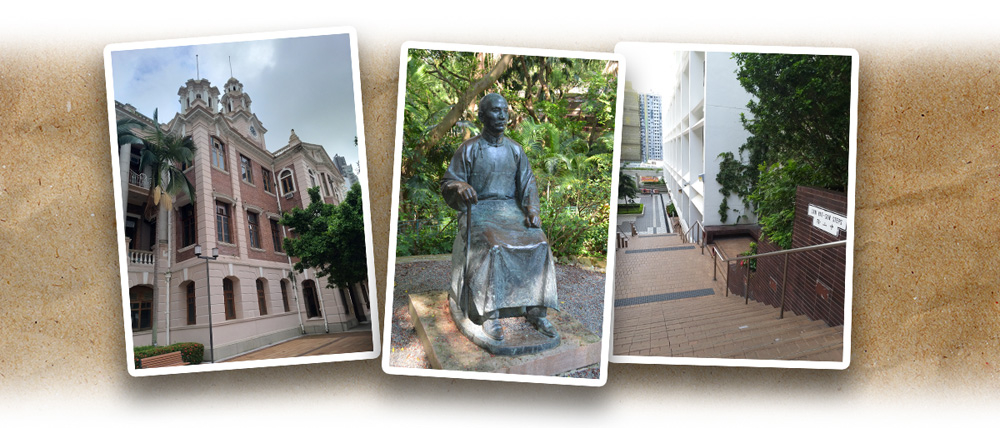The 17-year-old Sun Yat-sen (孫中山) damaged a statue in a temple in his hometown Xiangshan County (香山縣) in 1883 and irritated the gentry. His father thus sent him to Hong Kong to study. During the nine years from 1883 when Sun first arrived in Hong Kong and graduated from the College of Medicine, Hong Kong in 1892, he received two years of secondary and five years of university education. There were two years when he was away from Hong Kong. These seven years of education was crucial to the development of his revolutionary thoughts.
Sun once studied at the well-known Government Central School and learnt about the British revolution in the school materials. After graduating from the secondary school, he studied at the College of Medicine, Hong Kong. His classmate Kwan Sum-yin (關心焉, also known as Kwan King-leung, 關景良) recalled that the Prime Minister (Sun) was diligent and devoted to his study at the College. He studied medicine during the day and Chinese at night. He was often seen reading at night. His favourite books were about the French Revolution and Charles Darwin’s theory of evolution, which greatly influenced his thinking. On 20 February 1923, Sun gave a speech at the University of Hong Kong, where he was asked “when and how his revolutionary thoughts were nurtured” and his answer was Hong Kong.
|
|
How did Sun Yat-sen’s student years in Hong Kong contribute to his revolutionary work? |
|
|
See answer below. |
The young Sun Yat-sen admired the spirit of the anti-Qing Taiping Heavenly Kingdom (太平天國, or Heavenly Kingdom of Great Peace). He once damaged a statue in a temple in his hometown, which irritated the gentry. His father thus sent him to study in Hong Kong. The photo shows Sun’s former residence in present-day Cuiheng Village (翠亨村), Zhongshan City (中山市, formerly known as Xiangshan County). (Photo by Liu Shuyong)
Sun Yat-sen Museum in Hong Kong. The Museum houses many historical artefacts related to Sun. Standing at its entrance is a Sun’s bronze statue as a young man. His student years in Hong Kong changed his life as well as Chinese history.
The following is a description of the bronze statue provided by the Sun Yat-sen Museum:
In his youth, Sun Yat-sen received his secondary and university education in Hong Kong. He even stated that his revolutionary thoughts were nurtured in Hong Kong. This is why the Museum depicts the bronze statue of Dr Sun as a young man full of ambition and vitality during his student days.
The bronze statue depicts Dr Sun holding Chinese and Western books in his hands. This not only highlights Dr Sun as a book lover, but also a man of great learning in both Chinese and English and filled with ambition to save the country and its people.
Under the craftsmanship of a local sculptor, Mr Chu Tat-shing, this bronze statue brings Dr Sun to life before our eyes.
Sun Yat-sen started his student years in Hong Kong after enrolling in the Diocesan Home and Orphanage (now Diocesan Boys’ School) of the Anglican Church by the end of 1883. In April the following year, he was transferred to The Government Central School (now Queen’s College). The photos show the original site of the Diocesan Home and Orphanage located at Eastern Street in Sai Ying Pun today.
Sun Yat-sen stayed at Preaching House of the American Congregational Church at 2 Bridges Street (present look of the above address in left and middle photos) during his student years at the Diocesan Home and Orphanage and The Government Central School. He was baptised in the church and became a Christian in 1883. Sun’s name was the second on the list (right photo). Lu Zhonggui (陸中桂), whose name was the fourth on the list and was better known as Lu Haodong (陸皓東), was killed by the Qing government after the Guangzhou Uprising (廣州起義) in 1895. Sun referred to him as “the first person in Chinese history who sacrificed his life for the revolution for the republic”.
Sun Yat-sen enrolled in the upper secondary school of The Government Central School on 15 April 1884 and graduated in 1886. The photos show the original site of The Government Central School at present-day 44 Gough Street, Sheung Wan.
In 1887, Sun Yat-sen studied medicine at the College of Medicine, Hong Kong, a newly established college attached to the Alice Memorial Hospital. He graduated in 1892 and came first in class. The photos show the College in its early days of establishment, and the present look of the site at 77-81 Hollywood Road, Sheung Wan.
Sun Yat-sen stayed at the school dormitory when he was studying medicine in Hong Kong. He often attended the gatherings organised by the To Tsai Church adjacent to the hospital, thereby established the interpersonal network that later provided support for his revolutionary work. The photo shows the original site of the Church at 75 Hollywood Road, Sheung Wan today.
When studying medicine in Hong Kong, Sun Yat-sen often discussed current affairs and revolution with his like-minded classmates and friends. Four of them were collectively known as the “Four Bandits”. Left: a group photo of the “Four Bandits”, from the left are Yeung Hok-ling (楊鶴齡), Sun Yat-sen, Chan Siu-bak (陳少白), and Yau Lit (尢列). The person standing at the back is Kwan Sum-yin; Right: the “Four Bandits” used to meet at Yeung Yiu Kee, Yeung’s family shop at 8 Gough Street, Sheung Wan. The shop was replaced by a residential building called “Chun Shan House” at 2-10 Gough Street.
The College of Medicine, Hong Kong was integrated into the University of Hong Kong as its Faculty of Medicine in 1912. Therefore, the University calls Sun its alumnus. Many places in the University of Hong Kong are named after him. Left: the Main Building of the University today; Middle: the statue of Sun on the University campus; Right: the Sun Yat-sen Steps and the Sun Yat-sen Place below the Steps.
Sun Yat-sen visited the University of Hong Kong and took a group photo with the faculty members and students on 20 February 1923. In his speech that day, he mentioned that Hong Kong and the University of Hong Kong were the breeding grounds of his knowledge and his revolutionary thoughts were nurtured in Hong Kong.
|
|
How did Sun Yat-sen’s student years in Hong Kong contribute to his revolutionary work? |
|
|
The period contributed to his revolutionary work in these major aspects: (1) He had an opportunity to explore new things and learn new knowledge, which broadened his horizons. (2) He was inspired by good teachers such as Ho Kai (何啟), a great thinker, who supported his cause of revolution. (3) He met like-minded people such as his classmate Chan Siu-bak. These people joined him in the later anti-Qing revolution. (4) He got in touch with people from different backgrounds that helped build an interpersonal network for his revolutionary work. (5) He became familiar with the situation in Hong Kong, his base for planning uprisings. |
The images in this material are provided by Professor Liu Shuyong (Photos 1 and 9). Every effort has been made to trace the copyright holders and obtain permission to reproduce this material. Please do get in touch with any enquiries or any information relating to this image or the rights holder.




